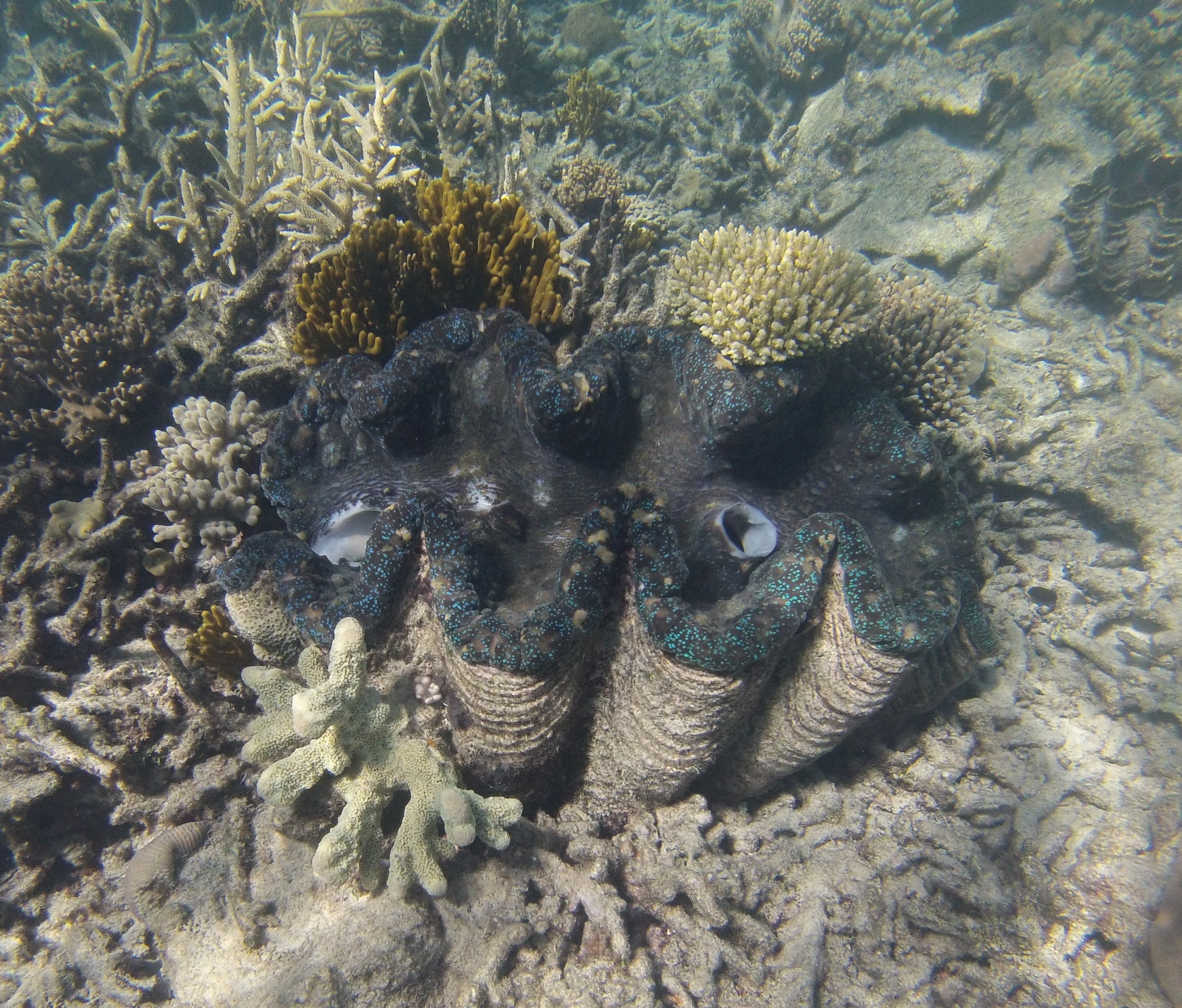
The Giant Clam certainly lives up to its name.
As the largest bivalve mollusc, the giant clam weighs an average of 200kg and can grow over a metre across its shell. They can live for several decades, with some individuals living for over 100 years.
These clams are found sitting on the sandy bottom in the warm, shallow waters of the Great Barrier Reef. They are easily spotted by their distinctive, fluted shell and the brightly coloured mantles (the “lips” of the clam).
Giant clams are filter feeders, taking in plankton through a large, central opening. However, like corals, giant clams have a unique relationship with algae called zooxanthellae that live within their tissues. The algae provide the clam with nutrients through photosynthesis, while the clam provides the algae with a safe environment and access to sunlight. The algae also give the mantle of the clams their vibrant colours.
Now, about that “Man-Eater” Myth…
Giant clams have a wildly undeserved reputation as man-eaters, with South Pacific legends describing clams that lie in wait to trap unsuspecting swimmers. No account of a human death by giant clam has ever been substantiated, and scientists say its adductor muscles, used to close the shell, move far too slowly to take a swimmer by surprise. Even the largest specimen would simply retreat into its shell rather than attempt to sample human prey. Nice to know.
The giant clams may not eat people, but they can see you…sort of.
Giant clams can see, but not in the way humans do. They have hundreds of tiny, simple eyes called "pinhole eyes" along the edge of their mantle. These eyes are not capable of forming complex images, but they can detect changes in light, movement, and shadows. For protection, clams will often close when they detect changes in light.
Giant clams are hermaphroditic, producing both eggs and sperm. A fully-grown giant clam can release over 500 million eggs in one go. As they cannot fertilise themselves, they reproduce through broadcast spawning. When an egg is release, this triggers nearby giant clams to swell their mantles and contract their adductor muscles. This causes the clams to fill with water containing broadcasted sperm and eggs.
Globally the giant clam population has decreased substantially. The clams are harvested for their meat, shells, and for the aquarium trade. Currently, they are listed as vulnerable.
However, the species has never been allowed to be collected from the wild in Australian waters, so it is reported to be in healthy numbers on the Great Barrier Reef. However, reef degradation due to pollution and climate change poses a significant threat to their survival.
Contributed with thanks to Whitsunday Conservation Council.
Giant Clam. Photo supplied.